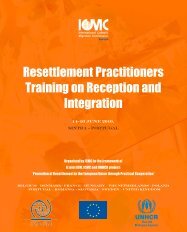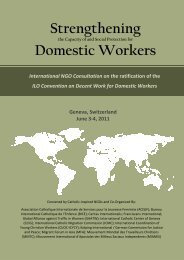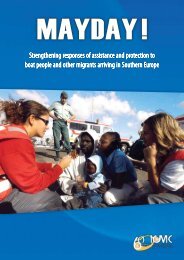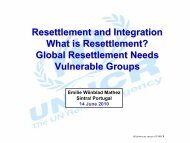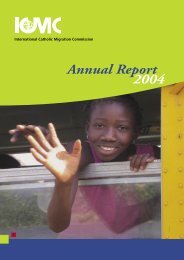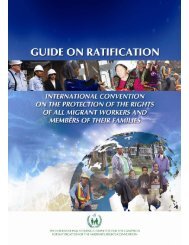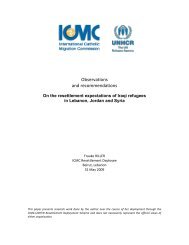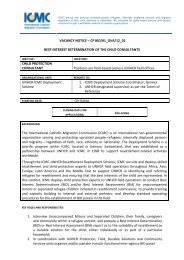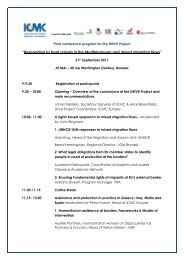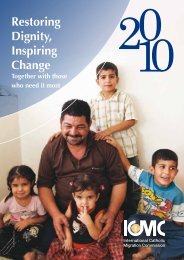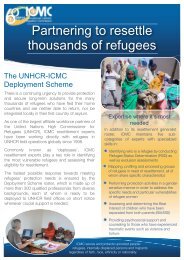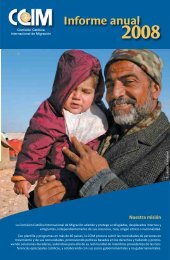ICMCEUROPE WelcometoEurope.pdf (5.89 MB)
ICMCEUROPE WelcometoEurope.pdf (5.89 MB)
ICMCEUROPE WelcometoEurope.pdf (5.89 MB)
Create successful ePaper yourself
Turn your PDF publications into a flip-book with our unique Google optimized e-Paper software.
106<br />
Chapter V - Resettlement in Europe: Rising Slowly but Surely<br />
• persons with serious medical<br />
needs that can only be addressed<br />
through resettlement. 34<br />
In order to receive the lump sum payments,<br />
Member States must communicate<br />
in advance to the European<br />
Commission how many refugees they<br />
plan to receive under the above categories<br />
for the coming year. This mechanism<br />
is known as the annual ‘pledging<br />
exercise’, and normally takes place in<br />
May of each year. 35<br />
3) ERF Community Actions - amounting<br />
to 4% of available ERF resources and<br />
managed centrally by the European<br />
Commission, this element of the<br />
ERF is designed to promote practical<br />
cooperation in resettlement<br />
between actors in two or more EU<br />
Member States. 36<br />
The ERF 2008-13, also known as ERF<br />
III, has been widely used to support<br />
Member States such as the Czech<br />
Republic and Romania to initiate or<br />
pilot new national resettlement programmes<br />
or to expand and/or improve<br />
national programmes (the Netherlands,<br />
Sweden and the UK). The country sections<br />
in chapter VI highlight examples<br />
of how ERF funding has been used to<br />
support initiatives to improve national<br />
resettlement programmes, including:<br />
34 Article 13 (3), ERF III Decision<br />
35 By 1 May each year, Member States provide the<br />
Commission with an estimate of the number of persons<br />
from the above categories that they will resettle during<br />
the following year. Article 13(6), ERF III Decision.<br />
36 European Commission European Refugee Fund<br />
2008-13 - Community Actions Work Programme for<br />
2012<br />
• piloting the selection of refugees for<br />
resettlement via video interviewing;<br />
• developing new approaches to<br />
pre-departure cultural orientation,<br />
including specific measures for<br />
dossier cases;<br />
• adapting reception arrangements,<br />
for example by receiving resettled<br />
refugees directly into municipalities<br />
rather than reception centres; and<br />
• promoting targeted integration<br />
support programmes for resettled<br />
refugees involving NGO counselling,<br />
volunteering, translation, national<br />
networking, language learning,<br />
employment support and housing<br />
arrangements.<br />
5.2. Use of ERF funding<br />
- challenges<br />
While existing resettlement has thus<br />
been improved via ERF III funding, civil<br />
society partners have highlighted a<br />
number of constraints in its operation.<br />
These include delays in the distribution<br />
of funds to NGOs by national governments,<br />
and difficulties in administering<br />
initiatives in which ERF beneficiaries<br />
must be separated from other groups<br />
using the same services.<br />
One can question how far the additional<br />
ERF III objective of increasing<br />
the number of refugees resettled to<br />
Member States has been achieved.<br />
More than 75% of the 15,292 resettlement<br />
places pledged under ERF III



